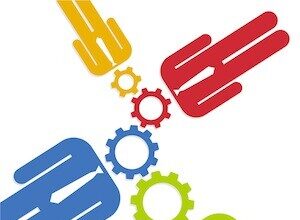Big data is a term thrown around in a lot of articles, and for those who understand what big data means that is fine, but for those struggling to understand exactly what big data is, it can get frustrating. There are several definitions of big data as it is frequently used as an all-encompassing term for everything from actual data sets to big data technology and big data analytics. However, this article will focus on the actual types of data that are contributing to the ever growing collection of data referred to as big data. Specifically we focus on the data created outside of an organization, which can be grouped into two broad categories: structured and unstructured.
Structured Data
1. Created
Created data is just that; data businesses purposely create, generally for market research. This may consist of customer surveys or focus groups. It also includes more modern methods of research, such as creating a loyalty program that collects consumer information or asking users to create an account and login while they are shopping online.
2. Provoked
A Forbes Article defined provoked data as, “Giving people the opportunity to express their views.” Every time a customer rates a restaurant, an employee, a purchasing experience or a product they are creating provoked data. Rating sites, such as Yelp, also generate this type of data.
3. Transacted
Transactional data is also fairly self-explanatory. Businesses collect data on every transaction completed, whether the purchase is completed through an online shopping cart or in-store at the cash register. Businesses also collect data on the steps that lead to a purchase online. For example, a customer may click on a banner ad that leads them to the product pages which then spurs a purchase. As explained by the Forbes article, “Transacted data is a powerful way to understand exactly what was bought, where it was bought, and when. Matching this type of data with other information, such as weather, can yield even more insights. (We know that people buy more Pop-Tarts at Walmart when a storm is predicted.)”
4. Compiled
Compiled data is giant databases of data collected on every U.S. household. Companies like Acxiom collect information on things like credit scores, location, demographics, purchases and registered cars that marketing companies can then access for supplemental consumer data.
5. Experimental
Experimental data is created when businesses experiment with different marketing pieces and messages to see which are most effective with consumers. You can also look at experimental data as a combination of created and transactional data.
Unstructured Data
People in the business world are generally very familiar with the types of structured data mentioned above. However, unstructured is a little less familiar not because there’s less of it, but before technologies like NoSQL and Hadoop came along, harnessing unstructured data wasn’t possible. In fact, most data being created today is unstructured. Unstructured data, as the name suggests, lacks structure. It can’t be gathered based on clicks, purchases or a barcode, so what is it exactly?
1. Captured
Captured data is created passively due to a person’s behavior. Every time someone enters a search term on Google that is data that can be captured for future benefit. The GPS info on our smartphones is another example of passive data that can be captured with big data technologies.
2. User-generated
User-generated data consists of all of the data individuals are putting on the Internet every day. From tweets, to Facebook posts, to comments on news stories, to videos put up on YouTube, individuals are creating a huge amount of data that businesses can use to better target consumers and get feedback on products. Big data is made up of many different types of data. The seven listed above comprise types of external data included in the big data spectrum. There are, of course, many types of internal data that contribute to big data as well, but hopefully breaking down the types of data helps you to better see why combining all of this data into big data is so powerful for business.








